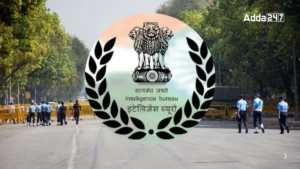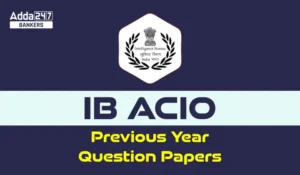Directions (1-10): Read the following passage carefully and answer the questions given below it. Certain words have been printed in bold to help you to locate them while answering some of the questions.
Our propensity to look out for regularities, and to impose laws upon nature, leads to the psychological phenomenon of dogmatic thinking or, more generally, dogmatic behaviour: we expect regularities everywhere and attempt to find them even where there are none; events which do not yield to these attempts we are inclined to treat as a kind of ‘background noise’; and we stick to our expectations even when they are inadequate and we ought to accept defeat. This dogmatism is to some extent necessary. It is demanded by a situation which can only be dealt with by forcing our conjectures upon the world. Moreover, this dogmatism allows us to approach a good theory in stages, by way of approximations: if we accept defeat too easily, we may prevent ourselves from finding that we were very nearly right.
It is clear that this dogmatic attitude, which makes us stick to our first impressions, is indicative of a strong belief; while a critical attitude, which is ready to modify its tenets, which admits doubt and demands tests, is indicative of a weaker belief. Now according to Hume’s theory, and to the popular theory, the strength of a belief should be a product of repetition; thus it should always grow with experience, and always be greater in less primitive persons. But dogmatic thinking, an uncontrolled wish to impose regularities, a manifest pleasure in rites and in repetition as such, is characteristic of primitives and children; and increasing experience and maturity sometimes create an attitude of caution and criticism rather than of dogmatism. My logical criticism of Hume’s psychological theory, and the considerations connected with it, may seem a little removed from the field of the philosophy of science. But the distinction between dogmatic and critical thinking, or the dogmatic and the critical attitude, brings us right back to our central problem.
For the dogmatic attitude is clearly related to the tendency to verify our laws and schemata by seeking to apply them and to confirm them, even to the point of neglecting refutations, whereas the critical attitude is one of readiness to change them — to test them; to refute them; to falsify them, if possible. This suggests that we may identify the critical attitude with the scientific attitude, and the dogmatic attitude with the one which we have described as pseudo-scientific. It further suggests that genetically speaking the pseudo-scientific attitude is more primitive than, and prior to, the scientific attitude: that it is a pre-scientific attitude. And this primitivity also has its logical aspect. For the critical attitude is not so much opposed to the dogmatic attitude as super-imposed upon it: criticism must be directed against existing and influential beliefs in need of critical revision — in other words, dogmatic beliefs. A critical attitude needs for its raw material, as it were, theories or beliefs which are held more or less dogmatically.
Thus, science must begin with myths, and with the criticism of myths; neither with the collection of observations, nor with the invention of experiments, but with the critical discussion of myths, and of magical techniques and practices. The scientific tradition is distinguished from the pre-scientific tradition in having two layers. Like the latter, it passes on its theories; but it also passes on a critical attitude towards them. The theories are passed on, not as dogmas, but rather with the challenge to discuss them and improve upon them. The critical attitude, the tradition of free discussion of theories with the aim of discovering their weak spots so that they may be improved upon, is the attitude of reasonableness, of rationality. From the point of view here developed, all laws, all theories, remain essentially tentative, or conjectural, or hypothetical, even when we feel unable to doubt them any longer. Before a theory has been refuted we can never know in what way it may have to be modified.
Q1. In the context of science, according to the passage, the interaction of dogmatic beliefs and critical attitude can be best described as:
(a) A duel between two warriors in which one has to die.
(b) The effect of a chisel on a marble stone while making a sculpture.
(c) The feedshare (natural gas) in fertilizer industry being transformed into fertilizers.
(d) A predator killing its prey.
(e) The effect of fertilizers on a sapling.
Q2. According to the passage, the role of a dogmatic attitude or dogmatic behaviour in the development of science is
(a) Critical and important, as, without it, initial hypotheses or conjectures can never be made.
(b) Positive, as conjectures arising out of our dogmatic attitude become science.
(c) Negative, as it leads to pseudo-science.
(d) Neutral, as the development of science is essentially because of our critical attitude.
(e) Inferior to critical attitude, as a critical attitude leads to the attitude of reasonableness and
rationality.
Q3. Dogmatic behaviour, in this passage, has been associated with primitives and children. Which of the following best describes the reason why the author compares primitives with children?
(a) Primitives are people who are not educated, and hence can be compared with children, who have not yet been through school.
(b) Primitives are people who, though not modern, are as innocent as children.
(c) Primitives are people without a critical attitude, just as children are.
(d) Primitives are people in the early stages of human evolution; similarly, children are in the early stages of their lives.
(e) Primitives are people who are not civilized enough, just as children are not.
Q4. Which of the following statements best supports the argument in the passage that a critical attitude leads to a weaker belief than a dogmatic attitude does?
(a) A critical attitude implies endless questioning, and, therefore, it cannot lead to strong beliefs.
(b) A critical attitude, by definition, is centred on an analysis of anomalies and “noise”.
(c) A critical attitude leads to questioning everything, and in the process generates “noise” without any conviction.
(d) A critical attitude is antithetical to conviction, which is required for strong beliefs.
(e) A critical attitude leads to questioning and to tentative hypotheses.
Q5. According to the passage, which of the following statements best describes the difference between science and pseudo-science?
(a) Scientific theories or hypotheses are tentatively true whereas pseudo-sciences are always true.
(b) Scientific laws and theories are permanent and immutable whereas pseudo-sciences are contingent on the prevalent mode of thinking in a society.
(c) Science always allows the possibility of rejecting a theory or hypothesis, whereas pseudo-sciences seek to validate their ideas or theories.
(d) Science focuses on anomalies and exceptions so that fundamental truths can be uncovered, whereas pseudo-sciences focus mainly on general truths.
(e) Science progresses by collection of observations or by experimentation, whereas pseudo-sciences do not worry about observations and experiments.
Directions (6-10): Choose the word/group of words which is MOST SIMILAR in meaning to the word/ group of words printed in bold as used in the passage.
Q6. PRIMITIVE
(a) Rudimentary
(b)Obsolete
(c) Naive
(d) Sophisticated
(e) Archaic
Q7. DOGMATIC
(a) Tentative
(b) Imperative
(c) Liberal
(d) Indulgent
(e) Forbearing
Q8. CONJECTURES
(a) Surmise
(b) Certitude
(c) Conviction
(d) Gospel
(e) Verity
Directions (9-10): Choose the word/group of words which is MOST OPPOSITE in meaning to the word/ group of words printed in bold as used in the passage.
Q9. MANIFEST
(a) Palpable
(b) Distinct
(c) Obscure
(d) Lucid
(e) Conspicuous
Q10. RATIONALITY
(a) Fallacious
(b) Shrewd
(c) Astute
(d) Perspicacious
(e) Cogent
Direction (11-15): Which of the phrases (a), (b), (c) and (d) given should replace the phrase given in bold in the following sentences to make the sentence grammatically meaningful and correct. If the sentence is correct as it is and no correction is required, mark (e) as the answer.
Q11. In guest rooms, the central portion is generally reserved for sofa set.
(a) generally is reserved
(b) is reserved generally
(c) was generally reserved
(d) are generally reserved
(e) No correction required
Q12. The impact of the composite bow on warfare was equal to the crossbow of medieval times.
(a) was equal to of the
(b) is equal to the
(c) is equal to that
(d) was equal to that of the
(e) No correction required
Q13. Culture, climate and geography plays an important part in the formation of any proverb
(a) plays an important role
(b) plays a important part
(c) play an important role
(d) plays important part
(e) No correction required
Q14. This book will be of particular interested to those fascinated by the recent philosophy
(a) of particularly interested
(b) of particular interest
(c) of interested in particular
(d) particularly of interested
(e) No correction required
Q15. These days developed countries have started looking down for underdeveloped countries as it is advantageous for both the parties.
(a) looking after
(b) looking down upon
(c) to look down at
(d) looking for at
(e) No correction required
Solutions
S1. Ans. (b)
Sol. According to the passage, “A critical attitude needs for its raw material, as it were, theories or beliefs which are held more or less dogmatically”. Therefore, our critical attitude is the tool by which we shape our dogmatic beliefs. Thus, the relationship of dogmatic beliefs and critical attitude is equivalent to that of a chisel and that of a marble stone.
S2. Ans. (a)
Sol. Option (c), (d) and (e) are ruled out because they are not supported by the passage. (negative, neutral, inferior) – Option (a) and (b) are close but (c) is better because the question is about the role of dogmatic behaviour with respect to the development of science. In the third paragraph, 8th line, it is mentioned that dogmatic attitude is pseudo/pre-scientific attitude. Science needs dogmatic beliefs for their critical revision. Beginning of fourth paragraph states that science begins with myths and criticism of myths. Thus, dogmatic behavior is required to develop science because the former serves as the base on which science is made.
S3. Ans. (d)
Sol. Refer to the last sentence of the second paragraph. It is clear from the context (especially from the words – ‘experience’, ‘maturity’) that time has a direct effect on the evolution of thinking. Option (d) is the only option which takes into account the element of time (the word- ‘stages’).
S4. Ans. (e)
Sol. Option (e) is correct because this statement suggests that critical attitude is a process of questioning which leads to tentative hypothesis. A critical attitude by itself is not opposed to conviction, but it tries to modify the conviction according to reason.
S5. Ans. (c)
Sol. Refer to the third last paragraph of the passage; dogmatic attitude is pseudo-scientific because its aim is only to verify its laws and schemata even if it has to neglect the refutations. Whereas critical attitude is flexible enough to change, refute or falsify and therefore has a questioning attitude.
S6. Ans. (a)
Sol. Primitive means very basic or unsophisticated in terms of comfort, convenience, or efficiency hence rudimentary is the word most similar in meaning.
S7. Ans. (b)
Sol. Dogmatic means inclined to lay down principles as undeniably true imperative is the word most similar in meaning.
S8. Ans. (a)
Sol. Conjecture means an opinion or conclusion formed on the basis of incomplete information hence surmise is the word most
S9. Ans. (c)
Sol. Manifest means clear or obvious to the eye or mind hence obscure is the word most opposite in meaning.
S10. Ans. (a)
Sol. Rationality means based on or in accordance with reason or logic.
S11. Ans. (e)
S12. Ans. (d)
S13. Ans. (c)
S14. Ans. (b)
S15. Ans. (a)





 IB ACIO Vacancy 2025 Notification Out, ग...
IB ACIO Vacancy 2025 Notification Out, ग...
 IB ACIO Previous Year Papers in Hindi: I...
IB ACIO Previous Year Papers in Hindi: I...
 18th July Daily Current Affairs 2025: सभ...
18th July Daily Current Affairs 2025: सभ...

